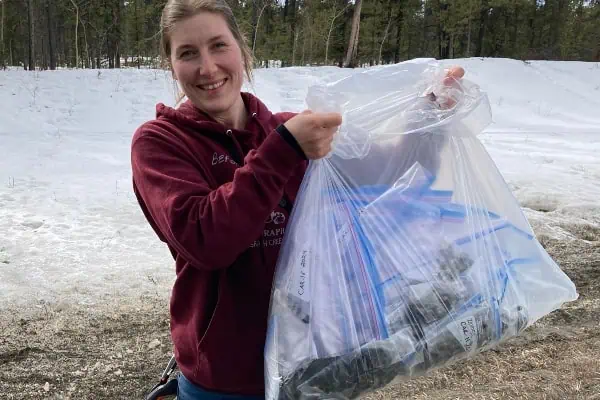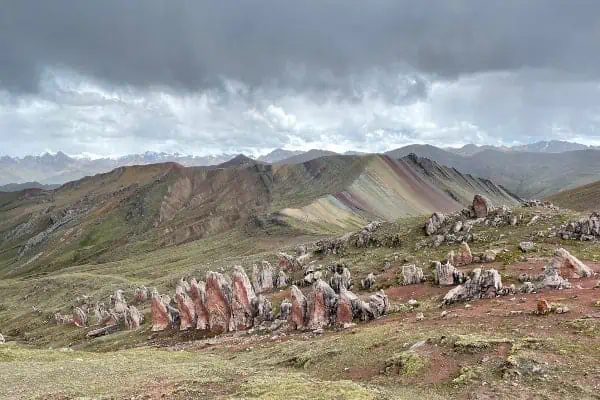When I first began eating wild mushrooms, I was studying squirrels. I watched which mushrooms they picked to stash in trees, and figured that whichever ones they ate were probably not (or not very) poisonous. These days I know a little more and am glad I didn’t base my entire wild diet on this type of reasoning, or I might not be around to tell the tale. Muskrats for instance, have been observed to chow down on what the US Department of Agriculture calls “the most violently poisonous plant in North America.” Most people call it water hemlock, though another name is muskrat-weed.
Water hemlock is in the carrot family, Apiaceae (old Umbelliferae), and has the characteristic white umbels (umbrella-shaped clusters of flowers) you might recognise from yarrow, cow parsnip, and of course carrots. Plants of the carrot family often contain compounds that act strongly on the human system, making them the source of both powerful medicines and strong toxins – I once went on a daylong field trip around southwest Scotland with the sole purpose of finding all the different members of this family, edible and deadly.
Water hemlock is a tall plant that grows in marshes and on stream banks, and I have anecdotally found it to be more common in areas with a lot of beaver activity, though overall it is not a common plant in the Yukon. Its alternate leaves are twice- or thrice-pinnate (divided in a fern-like fashion), contrasting to the once-pinnate leaves of water parsnip (Sium suave) whose roots are edible. A distinguishing feature is that the veins on the toothed leaflets end at the notches between the points, as opposed to running to the ends of the teeth. Take great care when identifying these plants, consult a good guidebook, and if there is any doubt, leave it out!
The root, or rhizome, in particular is extremely toxic, but no part of this plant should be touched – it is best to learn to identify it by looking at the leaf structure and the ribbed stems. The stems and rhizome contain a noxious, oily yellow liquid rich in the poison cicutotoxin, named after the genus (which is simply the latin word for these plants). It acts on the central nervous system, and in the convulsions that follow ingestion the heart muscle and those that control breathing are quickly compromised, leading to death. People are most often poisoned by this plant through mistaking it for an edible such as water-parsnip (also present, though rare, in the Yukon), or by using the hollow stems as straws. Anyone who ever played around with reed straws as a child can attest to their attractiveness as a toy, so if you and your kids are playing around in a marsh do a scan for this plant before letting them off on their own.
A final note: that water hemlock is not the poison hemlock that was famously taken by Socrates to end his life in prison. That plant is unique among the carrot family for acting on the peripheral as opposed to the central nervous system, according to research by Enid Bloch, bringing about a much calmer kind of death – if death can be said to be kind.
Water Hemlock Cicuta spp.
Deadliness: A piece the size of a marble is sufficient to kill a person.
Symptoms: Stomach ache, weak pulse, salivation, nausea, vomiting, diarrhea, difficulty breathing, tremors and violent convulsions.
Onset: Within 15 minutes of ingestion.
Treatment: Induce vomiting and administer a strong laxative, get medical help immediately.




